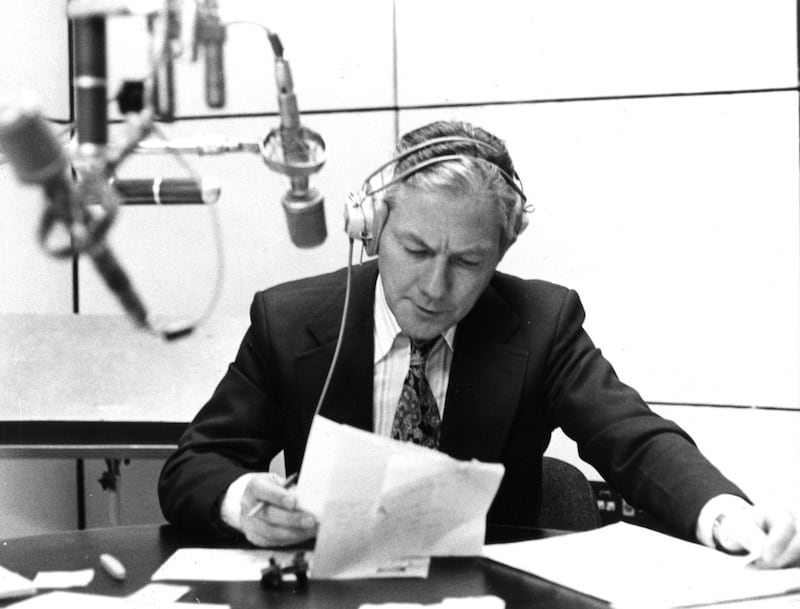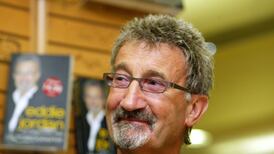The long shadow which Gay Byrne casts across the history of Irish broadcasting is often reduced in the telling to a handful of key moments which are deemed to represent landmarks in the opening up of Irish society from the 1960s onwards. But take a step back from those highlights and consider instead how, as a presenter (and, very importantly, a producer), Byrne came to embody our idea of how Irish TV and radio – and therefore Ireland itself – should look and sound at the end of the 20th century.
In so doing, he didn't just become RTÉ's dominant star for 40 years – although that was extraordinary enough. His impact was so great that even now, two decades after he stepped off The Late Late Show stage, there is still a Gay Byrne-shaped hole in the RTÉ schedules. Paradoxically, despite the fact he was sui generis, the people who run Irish broadcasting continue to dream of replicating his unique blend of all the talents.
His broadcasting heyday almost exactly matched the period when free-to-air national broadcasting exerted its greatest power on the national imagination

Equally at home with sound or vision, light comedy or personal tragedy, showbiz or politics, unflappable, incapable of embarrassment, utterly in control of his medium, it’s no surprise he has proved impossible to replace.
He was a man of his time – the moment when post-war pop culture and media entered its prime – and his timing was impeccable. Still in the foothills of his career when Telefís Éireann opened in 1962, he was well-placed to grasp the opportunity. A quiz show led to an offer of a late-night summer schedule-filler which would in turn become one of the longest-running TV programmes in the world. His broadcasting heyday almost exactly matched the period when free-to-air national broadcasting exerted its greatest power on the national imagination.
How did he become such a master of his genre? As audiences, we tend to take television’s conventions for granted. What is a chat show? Why does a sitcom look the way it does? What are the dramatic rules of soap operas? Most such conventions are rooted in radio. Some draw on older traditions of the popular stage – vaudeville in the US, variety here and in the UK.
In 1962, when home-grown TV finally started here, those conventions were shifting internationally. In the UK, the advent of commercial broadcasting meant a new type of presenter was emerging – cheekier, less deferential, less upper-class, more in tune with the Beatles generation.
Keen student
Byrne was a keen student. A report in The Irish Times in 1964, on his return from a season spent presenting TV shows in the UK, made his intentions clear. “So far as he was concerned London was very much a temporary home to enable him to have a closer look at the BBC and to get as much experience as possible, which he later hoped to bring home and place at the disposal of the radio and television network here.”
Judging by the reviews of the Late Late while he was away getting that experience (Frank Hall was the stand-in presenter), Byrne's brief absence also helped establish his indispensability – an important lesson to bring home to successive generations of RTÉ management.
Even though they kept him on three-month rolling contracts right up until the late 1980s, RTÉ needed Gay more than Gay needed RTÉ, although it wasn’t until the arrival of domestic commercial competition that he was able to negotiate the financial recognition of that fact, which he deserved.
Unique stylistic traits
In Byrne’s hands, The Late Late Show developed its own unique stylistic traits. The cameras, sound booms and other paraphernalia of a 1960s’ TV studio were too unwieldy to be kept entirely out of shot, but he turned that liability into a virtue, directing proceedings and calling out cues to technicians by name. There’s a reason why “roll it there Colette” became a catchphrase – the regular patter with the crew established the persona of Gay the benevolent ringmaster.
Orson Welles described directing a film as being like having "the greatest train set any boy ever had", and there was something about the glee with which Gay publicly pulled those strings.
Amidst the chat and the comedy and the music, there were lengthy discussions about subjects which not everyone wanted discussed. “The aim, plainly, was to stir up a bit of controversy by fair means or foul,” The Irish Times observed in a review of the Late Late in 1965. “If this is Gay Byrne’s alternative to frivolous topics, I’m all with him.” This touched on an essential truth about how he approached what he would have called “the gig”. His genius lay in an unparalleled ability to divine and then tease out subjects his audience, both in studio and across the country, would find most intriguing or entertaining. If that meant shining an unforgiving light on the pieties of the day, then so be it.
It was a potent mix of unerring populism, relentless professionalism and a taste for stirring things up that kept him so relevant for so long
If RTÉ management had set out to produce a programme that interrogated sexual mores, questioned the tenets of Catholicism and discussed whether the country was on the correct course (and they sometimes did), it would probably be hosted by a man with a plummy accent and hornrimmed glasses. Such programmes did exist, but they never had anything like the impact of The Late Late Show on television or the Gay Byrne Hour on radio.
In the radio studio, he didn’t have a live audience to banter with, but he was a master at achieving that essential quality of the medium, the sense that he wasn’t talking to thousands – this was just between him and you.
It was this potent mix of unerring populism, relentless professionalism and a taste for stirring things up that kept him so relevant for so long. As a motto, “give ’em what they want” may be disparaged some, but in doing exactly that, Gay found the pulse of his country and kept his finger firmly placed there.
People wanted to be entertained and amused, but also to be surprised and shocked and moved. His unique brilliance resided in how he could do all those things.















